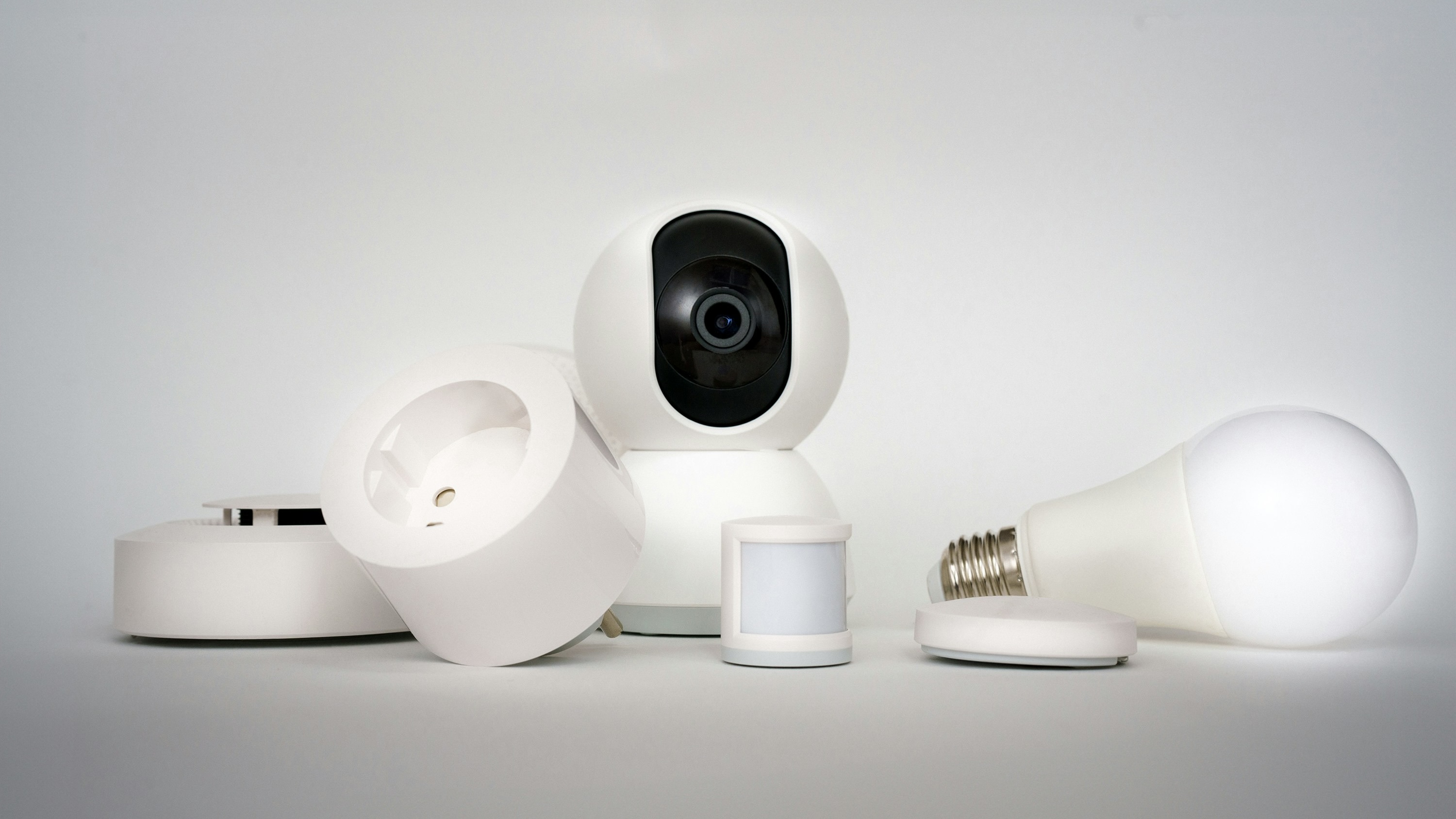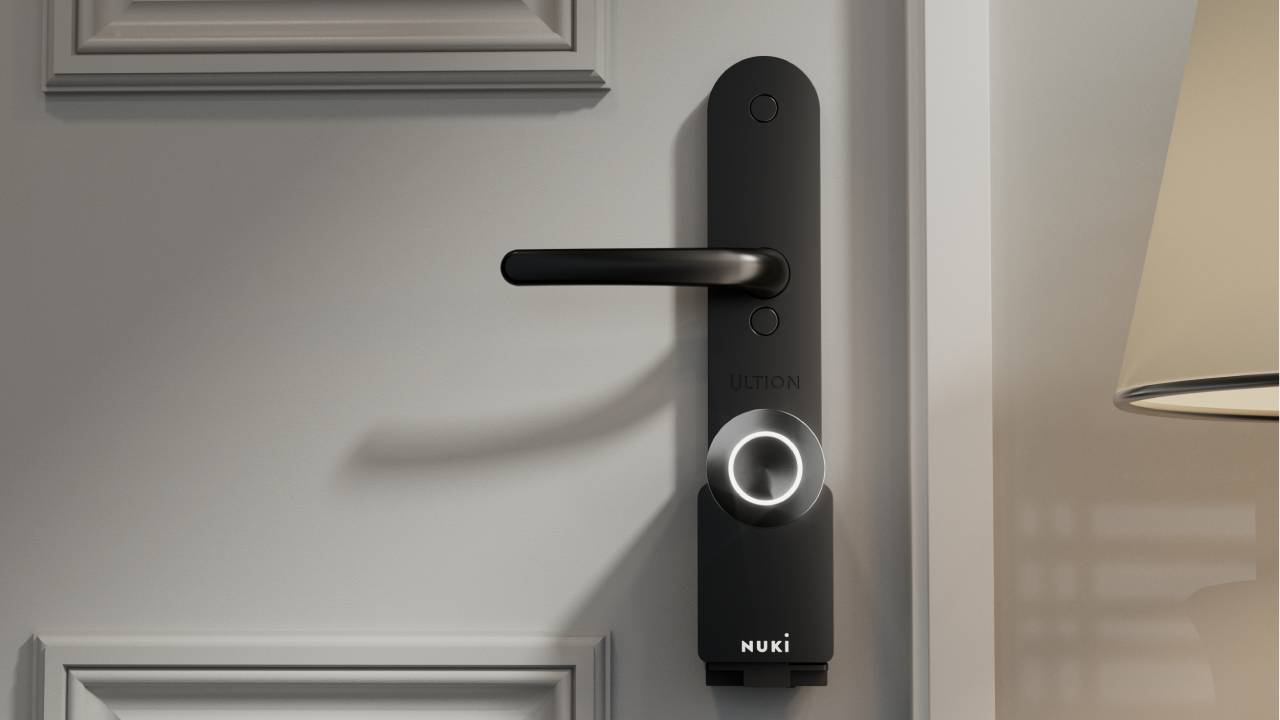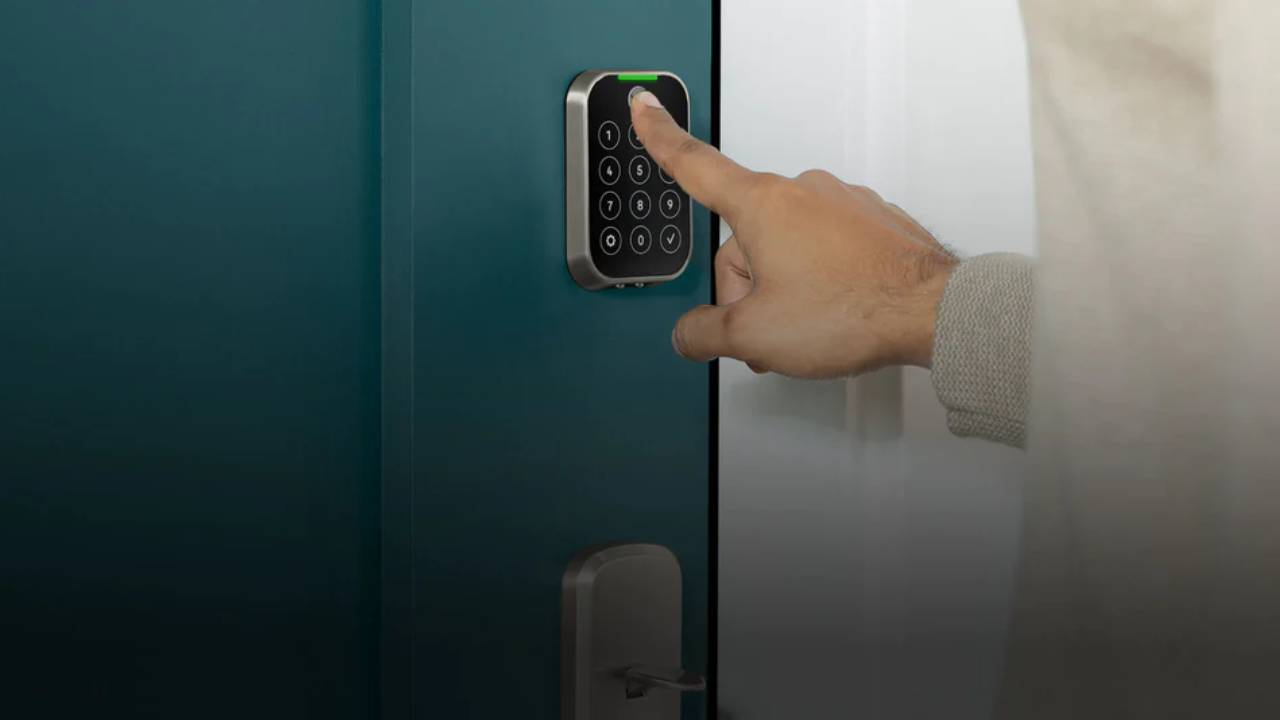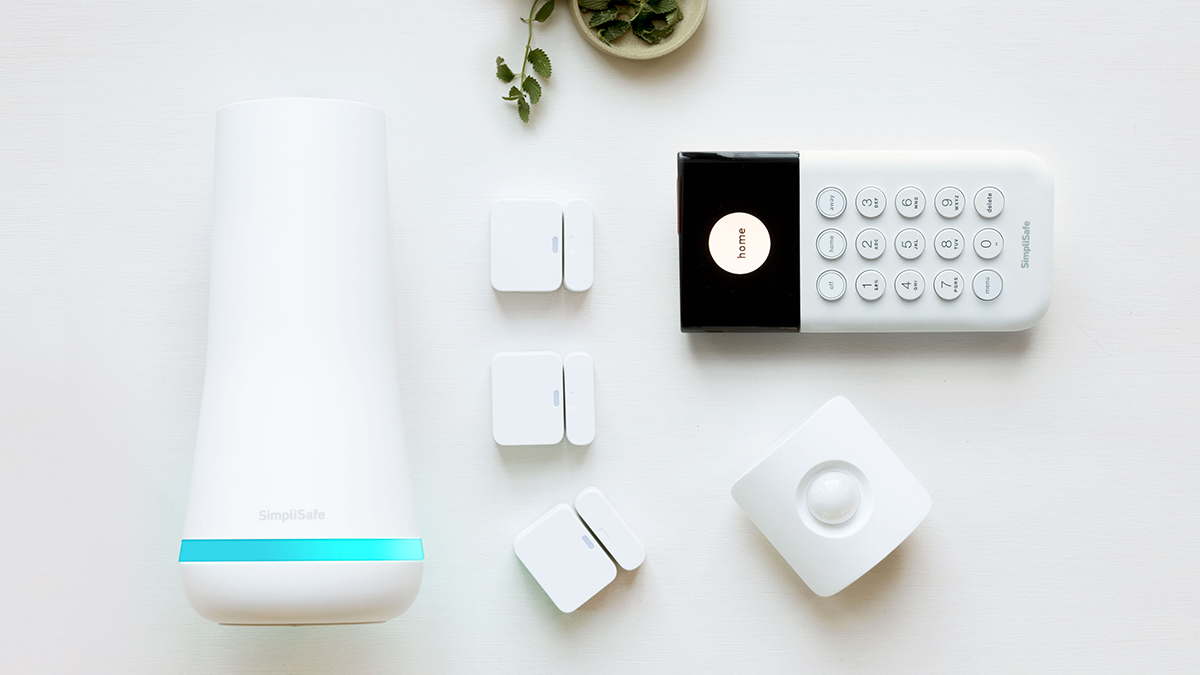Home security for renters – 3 best methods to keep your home safe
From smart locks to indoor cameras, here's how to keep your rented home safe


'Safe as houses', or so the saying goes. That should be the case whenever you lock your door, wherever you live, and however you pay for it.
Research by Nottingham Trent University found that private renters face a 63% higher risk of burglary than owner-occupiers. That’s a statistic that should concern anyone renting – or anyone who knows someone who is.
So, why the increased risk? The more transient nature of many renters means previous tenants could still have spare keys and there could be communal hallways and outdoor areas shared with strangers. Plus there’s the age-old problem of housemates who may simply not be as diligent, security-minded or trustworthy as you.
The problem is compounded when you consider landlords have only a fairly basic obligation to make a rental property secure: little more than ensuring door and window locks function. Historically, home security devices required drilling walls and rewiring electrics, neither of which would be allowed under the terms of most rental agreements.
But the rise in renter-friendly, removable smart tech has changed that. Here are your best options to secure your rental property and your personal space.
What can I do to secure my rented property?
Efficient batteries, USB power and smart connectivity have changed the game for security. But for renters, it gives the opportunity to make use of more security tech while staying within the terms of your rental agreement.
Step one – and I can’t underline this enough – is to read and understand your tenancy agreement to understand what you can and can’t do. The chances are that you won’t be able to drill holes, install or modify any of the property’s permanent wiring, or make any structural changes.
Get all the latest news, reviews, deals and buying guides on gorgeous tech, home and active products from the T3 experts
But you should be able to use adhesive mounts, such as double-sided tape to install and position battery-powered equipment and other portable devices. And that opens the doors to all kinds of kit.
If you can, look for tech that’s totally removable and won’t leave marks, because the last thing you need is to remove something only for a chunk of paint to come away with it. You might find Command Strips to be your saviour, but be careful how you peel them off.

1. Smart locks – how to secure your doors without replacing your locks
Locks are the first line of security defense, so unsurprisingly tech has an answer. There are a wide range of retrofit smart locks on the market which don’t require you to tamper with the lock barrel nor drill any holes in the door.
Typically, they attach to the inside of your door forming a mechanical connection with the deadbolt, and there are myriad benefits. Firstly these app-controlled smart locks mean that if you leave your keys at work – or in the pub – you’ll not be left locked out. And you can assign temporary access for guests, so you can allow your partner access if you’re running late.
But the real security benefit comes from the ability to track who has entered or exited your home. For renters, the SwitchBot Lock is ideal because it’s easily installed and can be removed without a trace. It attaches with double-sided tape, and has a robotic mechanism that operates the thumb turn on the inside of your door. In its most basic form, it interacts with your phone or Apple Watch, or when combined with a hub, can be controlled by Alexa or Google Home. An optional keypad is also available, which can be installed using supplied tape, and works up to 5m away from the lock.

Like the SwitchBot, the August Wi-Fi Smart Lock works with single-cylinder deadbolts and slides over the existing thumb turn quickly and easily. Where the August differs is that it looks far more elegant, with a metal casing available in silver or matte black. Unlike the SwitchBot, it has built-in Wi-Fi, so there’s no need for a separate hub, which makes things far more straightforward.
The August has auto lock and unlock features as you approach – or leave – the property, and you can distribute digital keys to others, which is useful if you’re lucky enough to have a cleaner, and it even supports two-factor authentication. You can remotely lock or unlock the door via the app, and it logs all activity.
The Yale Linus Smart Lock L2 performs broadly the same functions as the others here, but it taps into Yale’s wider ecosystem, so it can work with the brand’s smart cameras, alarms and garage and gate openers through the Yale Home app.
2. Indoor security cameras – peace of mind for private rooms
A quick search on Amazon will yield many indoor cameras, all of which can be a boon for those in house or flat shares, or HMOs (houses in multiple occupation). That’s because they’re small and discrete enough to be placed in a range of locations, including in private rooms.
There are rules around privacy in shared areas, such as kitchen or hallways. But if you’re looking for an indoor camera, you’ll ideally want something that’s battery powered, or fed via USB – preferably a combination of both. You’ll also want something that stores footage to the cloud, because if someone takes your stuff, and your camera, you’ll be left with no possessions and no camera to provide evidence. App notifications are useful, too, because it gives more chance to act on any nefarious behaviour while it’s still happening.
Look for cameras with privacy shutters or other deactivation features, too, because that’ll help you stick to the ICO’s guidelines.

At the budget end of the market, you have the TP-Link Tap C200, which at less than £20, is exceptional value because it has good image quality and powered pan and tilt. Although for this money you won’t be surprised to learn it doesn't do this automatically. The biggest fly in the ointment is that it doesn’t support cloud storage, rather it relies on limited internal memory or a microSD card up to 128Gb. But for this price, it’s worth it for the deterrent factor alone.
The Blink Mini is far more discrete by comparison, and costs a similar amount. It’s wired but can be positioned pretty much anywhere, with or without the stand, which is handy. It took us about 10 minutes to set up when we tested it. Picture quality is perfectly acceptable given the price, although it lacks some of the trick features of more expensive models. It can be controlled via Alexa or an Echo and its footage can be beamed through Fire TV, Echo Show or through the app. It’s cheap enough to have multiple cameras around the place, if you felt the need.
Bumping the budget sees the Arlo Essentials Indoor Camera come into play. It’s a fully-functioned unit which has a privacy shutter (a big ICO tick there) which can be activated via the app, which is handy for avoiding triggering your own alerts when you arrive home. Two-way audio means you can bark at any sneaky housemates, and it’s compatible with Alexa and Google Home.
3. Wireless alarm systems – protect your home, without drilling or wiring
The days of having to drill holes and route cables to install a home alarm are long gone, because the rise of the smart alarm system means you can install a sophisticated alarm system yourself in less than an hour.
A basic alarm system could cost less than £100, although if you want to exploit the myriad add-ons, you could be looking at twice that – or more. The first thing is to assess your property: a bedsit may only need a passive infra-red (PIR) sensor, or perhaps a door and window sensor, but a two story house may need multiples of these, or other features entirely.
For most rentals, the key things you’ll want are a door and window sensors (installed out of the way to avoid being knocked), a PIR sensor (facing away from windows to avoid false alarms; pet-friendly ones if your landlord allows you to have a cat or dog) and either a keypad or an app to arm and disarm the system.

It’s hard to talk about any kind of smart home system without mentioning Ring. The Alarm Pack - S does all of the things mentioned, and with the simplicity we’ve come to expect from the firm. The base unit connects via Wi-Fi or Ethernet and has 24-hour battery life should you have a power cut, and depending on your subscription, cellular back-up, too. It even comes with a range extender to get around the average-sized house with ease.
The beauty of the Ring system is that it’s expandable with features like a panic button and an AI-based glass-breaking sensor. You can have an external siren, too, but that might not be landlord-friendly as it’ll require drilling, although in any version you’ll get alerts to your phone, or you can choose to receive automated calls with a £7.99 monthly subscription
If you’re averse to Ring, then the SimpliSafe Essentials Kit does broadly the same job. Like the Ring you’ll get a phone call if you choose the premium subscription, but SimpliSafe can also contact you if your home is affected by fire, flooding, extremes of temperature or package theft – assuming you have chosen the appropriate accessories.
How to protect a shared house or HMO
A full alarm system might not win you too many friends if you’re in a flat share or an HMO, but there are still simple steps you can take to boost your security.
A simple door sensor and camera, such as the SimpliSafe Foundation may do the job perfectly well, although you’ll pay 92p per day for the privilege. If you’re on a budget, don’t underestimate the effectiveness of the cheap and cheerful Yale Mini Wireless Alarm. While it lacks a camera, it does combine a door sensor, PIR and 130dB alarm, all for less than £40 – and you don’t even need a subscription.
Smart plugs and smart bulbs can help with light automation when you’re away, and portable safes or lockable draws can help keep valuables safe from light fingers. Just remember that any safes you install will need to be securely bolted down – and that will require drilling – and you’ll want to keep them out of sight.
Stuart is a highly experienced journalist with a track record at some of the UK’s most prestigious automotive titles, including What Car?, Autocar and Auto Trader. On the way, he’s reviewed pretty much every important car on the road – and is equally adept at understanding a wide range of related products, from cool boxes to digital multimeters. When not behind the wheel, Stuart has a huge interest in home improvement, and loves nothing more than spending the weekend on the tools. His latest project is fettling a workshop to house his growing passion for woodworking.
You must confirm your public display name before commenting
Please logout and then login again, you will then be prompted to enter your display name.
